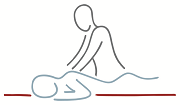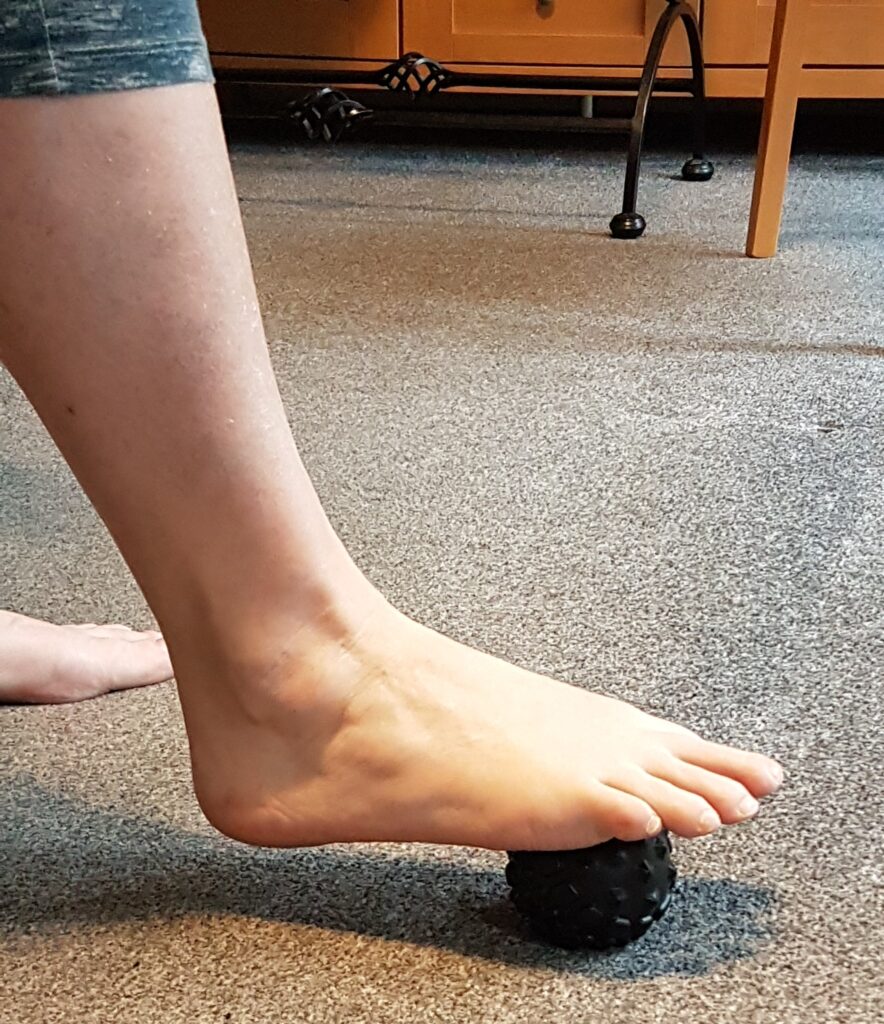The plantar fascia is a thick strap of connective tissue that runs from the ball of the foot to the heel. It supports the foot arch and gives us the spring in our step. Plantar Fasciitis is an over use injury of this tissue and causes pain in the heel which sometimes radiates out along the arch. It usually comes on gradually and is worse upon rising in the morning as the foot has been relaxed all night and the fascia has shortened. It is more common amongst people who stand on hard surfaces or walk for long periods of time (Policemen, Teachers, factory Workers) or in people who participate in running, jumping and dancing. Increased risk factors include over -pronation, a high (or a flat) arch, tight calf muscles or being overweight.
Treatment should be in three stages – Reducing the pain, stretching the foot and lower leg muscles/fascia and correcting the cause.
Pain Reduction –
The P.R.I.C.E. protocol should be used in the first instance to reduce pain and inflammation. I have discussed this in previous posts and blogs. Anti-inflammatory drugs may also be necessary for a short period of time (make sure to follow directions on packaging). Taping the foot into a comfortable position can ease the pain as can wearing comfortable and supportive footwear. Night splints can help to keep the fascia stretched overnight and ease the upon rising.
Stretches –
As Plantar Fasciitis is more common when the calf and lower leg muscles are tight, this is an area to focus on when stretching. Here are a few common stretches that can help. Hold each one for 15-30 secs and perform as often as possible throughout the day. The plantar fascia can be rolled with a firm ball or with an iced bottle of water. You can also stretch it by pulling your toes up towards your shin.
Returning to fitness and correcting the cause –
Once the pain is under control, you can try to work out the cause of your problem. Commonly it is tight muscles, foot mechanics or poor footwear in sports people. In non – athletes it is likely to be working conditions or weight. The following checklist may help to find out and alleviate the cause:
Overweight? – Eat a healthy diet and try to take some exercise. Consult your doctor for help if you are very overweight.
Working on your feet all day on a hard surface? – Wear supporting and comfortable shoes or trainers to help cushion the soles. Take regular breaks and try to stretch the lower legs and feet as often as possible. A regular deep tissue massage may help to manage the symptoms by relaxing the muscles.
Tight calf muscles – Make sure you add this area into your stretching and foam roller routine. Consider a regular sports massage to help release tense muscles and use a firm ball or iced water bottle to roll the plantar fascia regularly.
Foot mechanics – If you suspect that your arch may be causing the issue, get your feet and/or gait checked by a professional .
Poor footwear – Make sure your trainers are suitable for your foot mechanics and are not worn out. Seek professional help from a reputable retailer after having your feet and gait checked. An investment in time and money now should stop the problem coming back and enable you to train successfully.
Return to training gradually and continue with the stretching, icing and rolling even after the pain has gone. This injury is very common and is likely to return if the cause is not resolved. Occasionally these simple measures do not resolve the issue and Steroid injections or Extracorporeal shock wave therapy can be used by a medical practitioner. In most cases the measures discussed above will be successful.
If you would like any help with managing this common condition, please get in touch.

